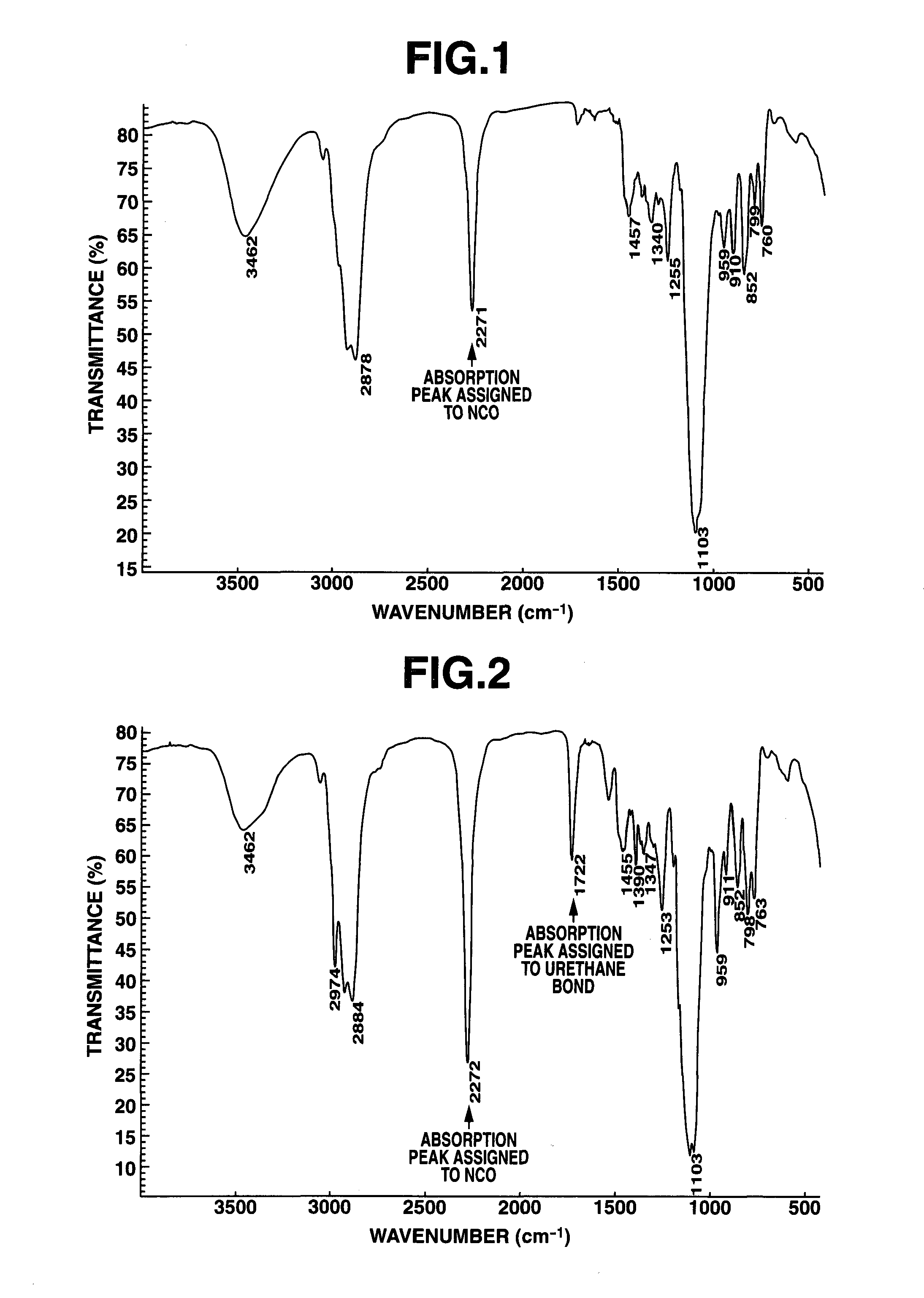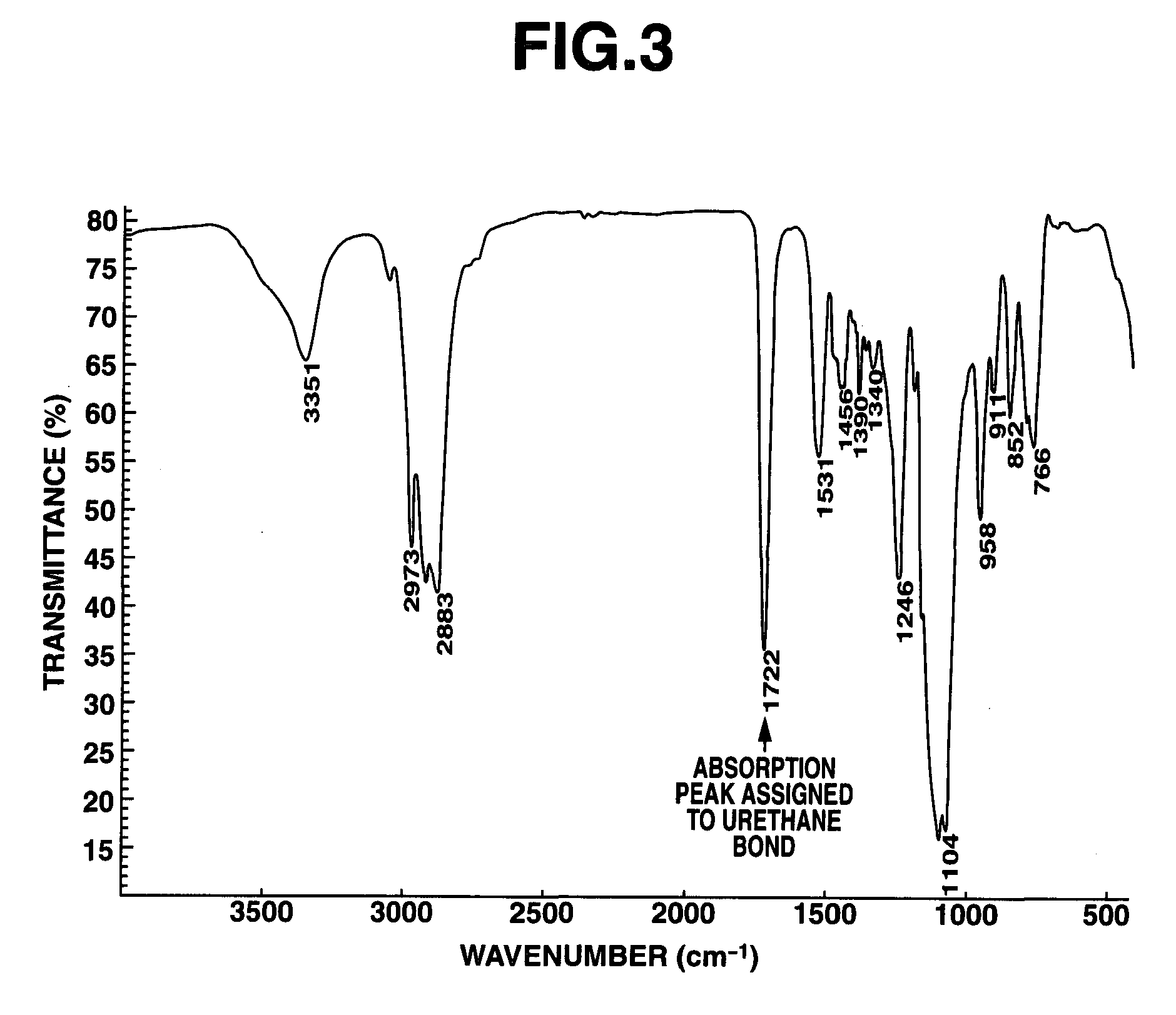Polyfunctional epoxy-containing organosilicon compound, making method, coating composition, and coated article
a polyfunctional, organosilicon technology, applied in the direction of group 4/14 element organic compounds, chemical instruments and processes, organic chemistry, etc., can solve the problem of not being able to incorporate more epoxy groups from the molecular design aspect, and achieve significant adhesion improvement, increase the number of reactive sites, and enhance the bonding strength of organic resin
- Summary
- Abstract
- Description
- Claims
- Application Information
AI Technical Summary
Benefits of technology
Problems solved by technology
Method used
Image
Examples
example 1
[0043]A 1-L separable flask equipped with a stirrer, reflux condenser, dropping funnel and thermometer was charged with 100 g of polyglycerin polyglycidyl ether having an epoxy equivalent of 168 (SR-4GL, Sakamoto Yakuhin Kogyo Co., Ltd.) and heated at 80° C. To the flask, 49.0 g of 3-isocyanatopropyltriethoxysilane was added dropwise. The contents were heated and stirred at 80° C. for 4 hours while the reaction process was monitored by IR spectroscopy. The completion of reaction was identified when the absorption peak assigned to an isocyanate group in the reactant disappeared and the absorption peak assigned to a urethane bond was observed instead. The reaction product was a pale yellow liquid having a Mw of 1,800, a viscosity of 1,074 mPa-s, and an epoxy equivalent of 265. It is a compound of formula (1) wherein “a” is 9 on average and a ratio A / B=3. FIG. 1 is an IR spectrum of the reactant prior to reaction, FIG. 2 is an IR spectrum of an intermediate during the reaction process,...
example 2
[0044]A 1-L separable flask equipped with a stirrer, reflux condenser, dropping funnel and thermometer was charged with 100 g of polyglycerin polyglycidyl ether having an epoxy equivalent of 168 (SR-4GL, Sakamoto Yakuhin Kogyo Co., Ltd.) and 0.6 g of dioctyltin oxide and heated at 80° C. To the flask, 49.0 g of 3-isocyanatopropyltriethoxysilane was added dropwise. The contents were heated and stirred at 80° C. for 2 hours while the reaction process was monitored by IR spectroscopy. The completion of reaction was identified when the absorption peak assigned to an isocyanate group in the reactant disappeared and the absorption peak assigned to a urethane bond was observed instead. The reaction product was a pale yellow liquid having a Mw of 1,800, a viscosity of 1,014 mPa-s, and an epoxy equivalent of 267. It is a compound of formula (1) wherein “a” is 9 on average and a ratio A / B=3.
example 3
[0045]A 1-L separable flask equipped with a stirrer, reflux condenser, dropping funnel and thermometer was charged with 100 g of polyglycerin polyglycidyl ether having an epoxy equivalent of 168 (SR-4GL, Sakamoto Yakuhin Kogyo Co., Ltd.) and heated at 80° C. To the flask, 24.5 g of 3-isocyanatopropyltriethoxysilane was added dropwise. The contents were heated and stirred at 80° C. for 4 hours while the reaction process was monitored by IR spectroscopy. The completion of reaction was identified when the absorption peak assigned to an isocyanate group in the reactant disappeared and the absorption peak assigned to a urethane bond was observed instead. The reaction product was a pale yellow liquid having a Mw of 1,700, a viscosity of 1,184 mPa-s, and an epoxy equivalent of 219. It is a compound of formula (1) wherein “a” is 9 on average and a ratio A / B=6.
PUM
| Property | Measurement | Unit |
|---|---|---|
| Composition | aaaaa | aaaaa |
Abstract
Description
Claims
Application Information
 Login to View More
Login to View More - R&D
- Intellectual Property
- Life Sciences
- Materials
- Tech Scout
- Unparalleled Data Quality
- Higher Quality Content
- 60% Fewer Hallucinations
Browse by: Latest US Patents, China's latest patents, Technical Efficacy Thesaurus, Application Domain, Technology Topic, Popular Technical Reports.
© 2025 PatSnap. All rights reserved.Legal|Privacy policy|Modern Slavery Act Transparency Statement|Sitemap|About US| Contact US: help@patsnap.com



